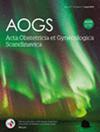Preterm birth in Latvia: Two-decade national trends, structure, and risk factors
Abstract
Introduction
Latvia, alongside other Baltic and Nordic countries, exhibits some of the world's lowest preterm birth (PTB) rates. We sought to identify the factors sustaining this stability and to examine how PTB structure, trends, and risk factors have evolved in Latvia over time, amid the nation's significant socioeconomic transformation in recent decades.
Material and Methods
This retrospective study analyzed all term and PTBs in Latvia from 2000 to 2023, using data from the Disease Prevention and Control Centre's Health Statistics database. We evaluated records at 5-year intervals, assessing temporal trends in PTB and term birth outcomes, including neonatal and perinatal mortality, labor onset (spontaneous or indicated), and prematurity subgroups, alongside known PTB risk factors (n = 16). Joinpoint regression identified significant trend shifts, with statistical significance set at p < 0.05.
Results
Latvia's overall PTB rate remained stable at 5.5% from 2000 to 2023, with no significant trend, while the proportion of spontaneous versus indicated PTB changed over time. Spontaneous extremely PTB decreased by 0.7% every 5 years, from 8.5% in 2000 to 5.2% in 2023 (p = 0.005), and very to moderate PTB declined by 1.3% every 5 years, from 26.2% to 19.5% over the same period (p = 0.011). A significant upward trend was identified in the total indicated PTB rate, with an increase of 3.3% every 5 years, rising from 12.5% in 2000 to 29.2% in 2023 (p = 0.036), driven by the increase in late indicated PTBs. Perinatal mortality for PTB in Latvia declined significantly by 1.21% every 5 years, from 13.15% in 2000 to 7.09% in 2023 (p = 0.005). Primiparity, smoking, urinary tract infections, and lower education levels among PTB mothers decreased significantly, while maternal age, previous cesarean sections, and intrauterine growth restriction as PTB risk factors increased.
Conclusions
Despite PTB structure and risk factor shifts, Latvia's 5.5% PTB rate remained stable over two decades, with indicated PTB rising due to expanded late preterm indications. Improved neonatal and perinatal mortality reflect effective guidelines, socioeconomic growth, and care investments, countering adverse trends.





 求助内容:
求助内容: 应助结果提醒方式:
应助结果提醒方式:


